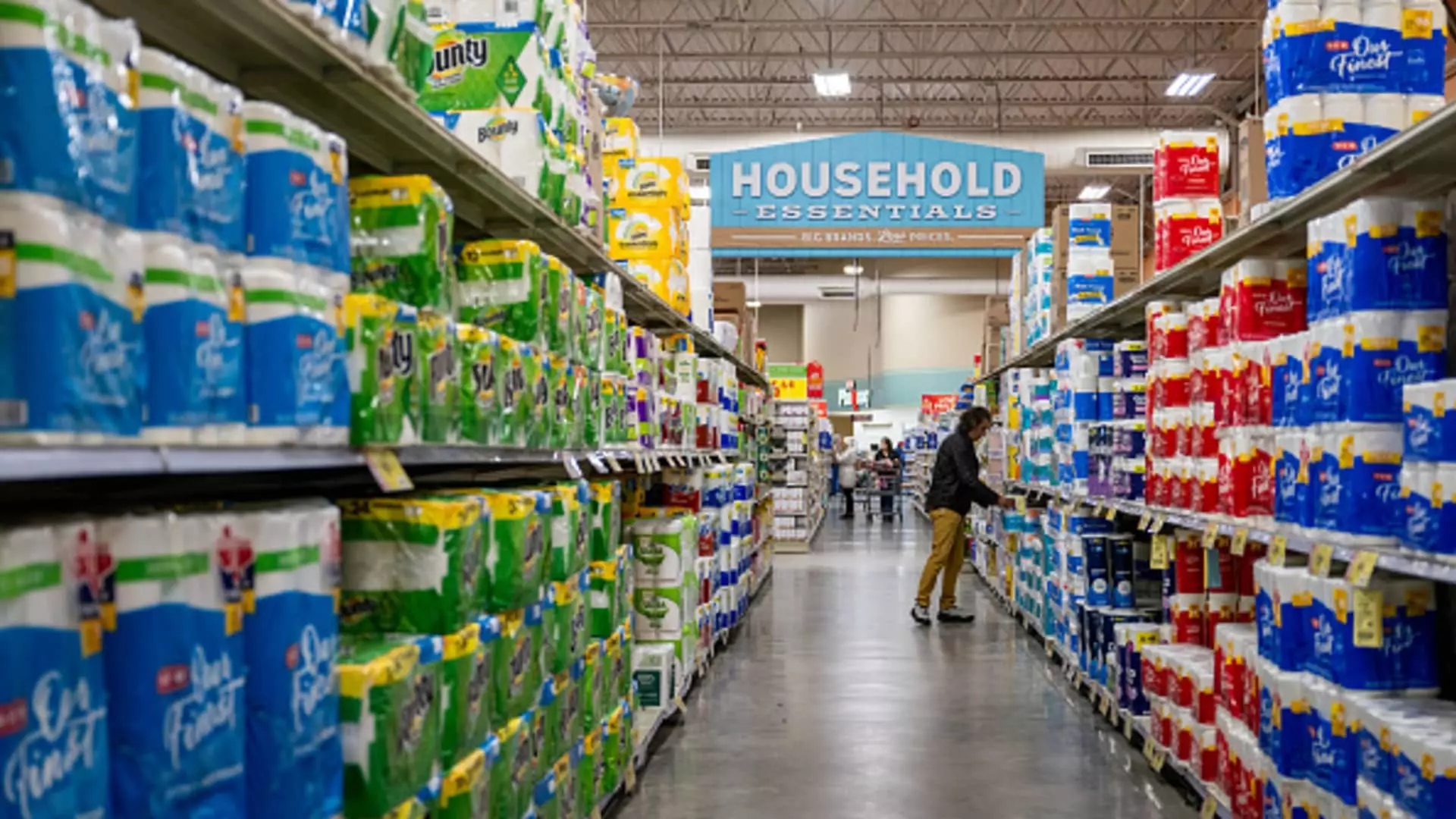The decision by the Trump administration to impose increased tariffs on goods imported from over 180 countries is raising alarm bells among consumers and industry experts alike. On the surface, the “America First” trade policy aims to rejuvenate American manufacturing and bring jobs back to the homeland. However, as is often the case in complex economic interactions, well-intentioned policies can have unforeseen and dire consequences. The result is likely to be higher prices on essential goods, from coffee to toilet paper, jeopardizing the budgets of everyday Americans.
The Consumer Brands Association (CBA), representing giants like Coca-Cola and Procter & Gamble, has emphasized a critical point: not all ingredients necessary for domestic production can be sourced within the United States. This raises questions about the efficacy of a one-size-fits-all tariff approach that does not consider specific market conditions. It illustrates a significant flaw in the rationale behind such sweeping tariffs—what good is a policy designed to protect American businesses if it ends up penalizing them instead?
Specificity in Tariffs: A Poor Strategy
Tariffs are intended to level the playing field for American producers, yet the reality is that they often backfire due to the unique components required for various products. Critical imports like bananas and coffee—which thrive in climates that the U.S. cannot replicate—are necessary for daily consumption. The imposition of a 10% tariff on bananas from Guatemala, or a staggering 47% on vanilla imports from Madagascar, will not only raise prices at the supermarket but will also inhibit consumer choice and drive families to rethink their shopping lists.
The CBA’s concerns extend beyond food staples. Everyday household items like toilet paper, diapers, and lotions are also expected to see price hikes as manufacturers pass on the escalating costs of raw materials—many of which are reliant on imports. A 32% duty on palm oil sourced mainly from Indonesia underscores the impracticality of these tariffs for products essential for maintaining hygiene and comfort. Are American families supposed to bear the brunt of these needless increases for the sake of an ill-conceived trade strategy?
The Deteriorating Domestic Supply Chain
For too long, American agriculture has been on a downward trend, creating a precarious foundation for the country’s food supply. Over 90% of the oats milled for food in the U.S. are imported from Canada, owing to a historical decline in domestic oat farming. This trend illustrates how decades’ worth of policy changes and agricultural shifts have left the U.S. unable to meet its demand for certain staples. As American manufacturing jobs are preserved, what about the need for a reliable food supply? The tariffs seem to ignore this vital aspect, creating a situation where reduced supply will only lead to inflated prices—a scenario where no one wins.
In reality, the normalcy bias that many policymakers adhere to—that families will simply adjust their spending habits, and that businesses will absorb the costs—fails to recognize the human side of economic policy. The average consumer does not have the luxury of time or resources to seek alternatives amid rising prices. This impending struggle, exacerbated by poorly conceived tariffs, is likely to push budget-conscious families further into financial distress.
Stock Market Reactions: A False Sense of Security?
Interestingly, despite the projected rise in consumer prices, the stock markets reacted with a degree of optimism, particularly among consumer staples companies. Shares of industry leaders benefited as investors sought refuge in staples amidst a declining market. But this perception of safety should not be confused with a genuine commitment to consumer welfare. The very fact that companies are adjusting their pricing strategies to mitigate tariff impacts speaks volumes about the fragility of our current economic climate.
While large corporations may adapt, the day-to-day American shopper bears the immediate brunt of these changes. Rising prices for essentials are not just a statistic; they directly affect quality of life. For a nation that prides itself on individualism and opportunity, this economic model presents a troubling dichotomy: while certain businesses may thrive, the average consumer is left grappling with the fallout of misguided trade policies.
The tariffs set to roll out appear to be a blunt instrument, likely causing more harm than good. As policymakers forge ahead with their agenda, the necessity for a nuanced approach that recognizes the interconnectedness of global markets becomes increasingly clear.


Leave a Reply